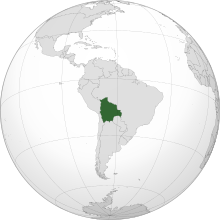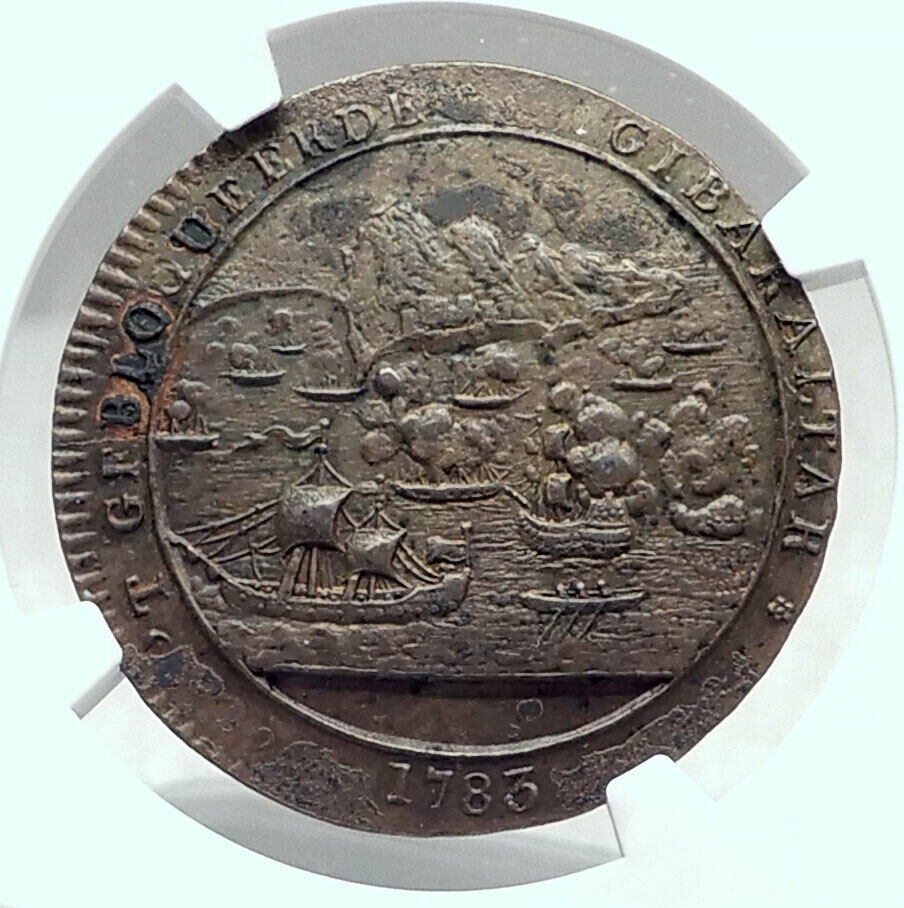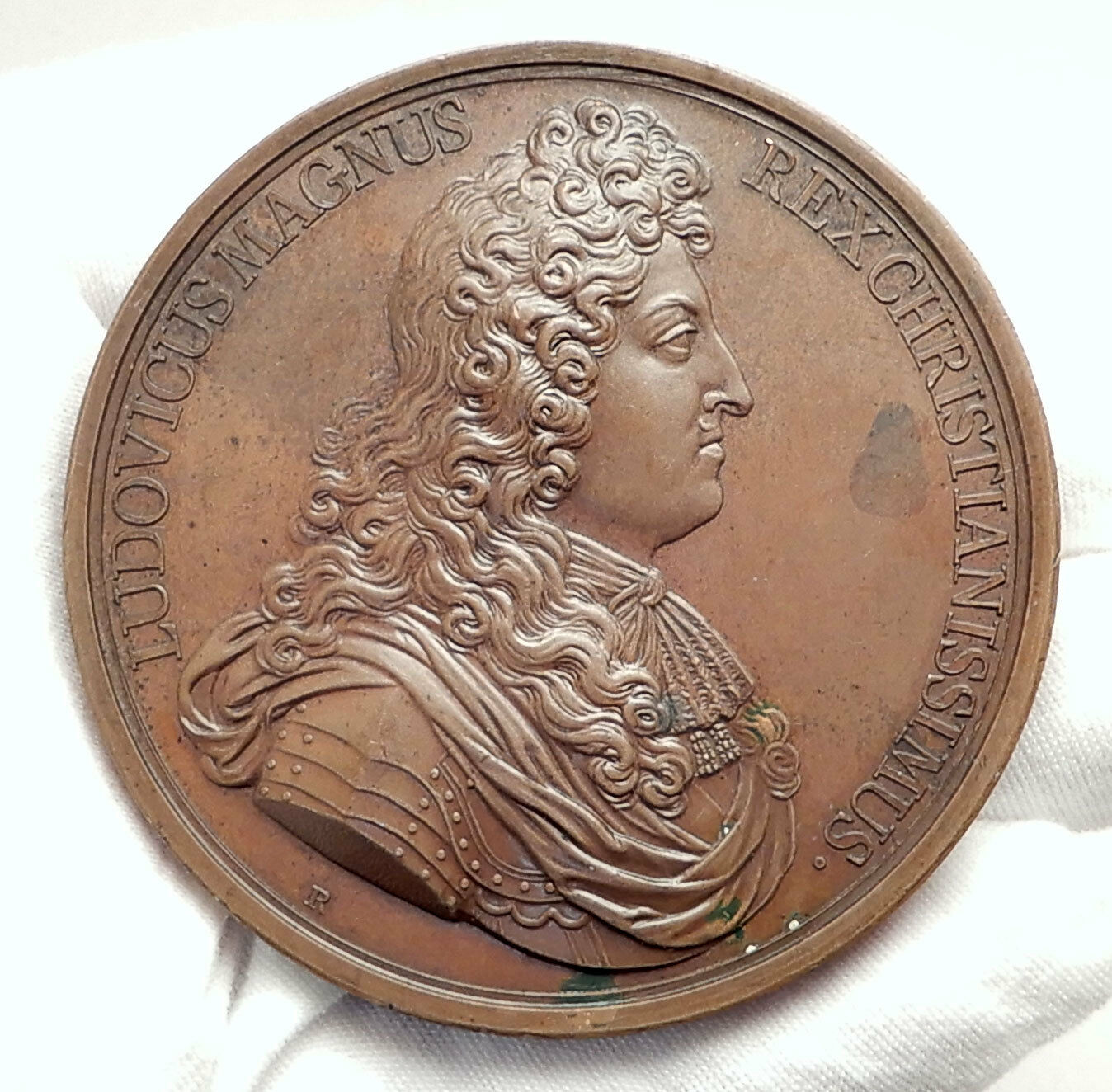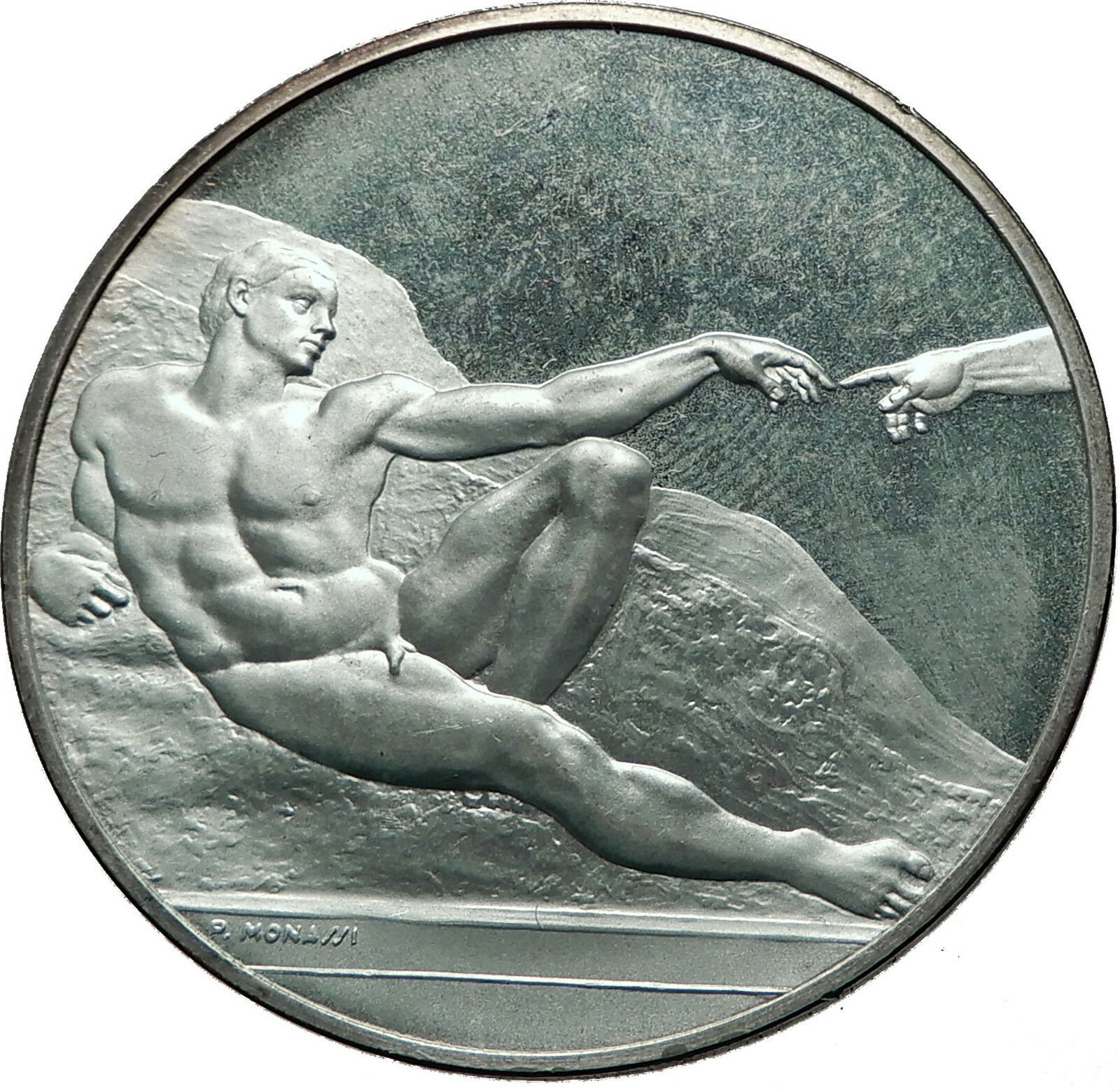|
Bolivia
General & President Manuel Isidoro Belzu
1852 Silver Medallic Potosi “1 Sole” 20mm (3.30 grams)
EL DEPARTEMENTO DE POTOSI EN 1852, Angel blowing trumpet with wreath in the name of Belzu.
AL SER SUPREMO QUE SALVO A BOLIVIA EN 6. D STERE DE 1850, Radiant temple.
You are bidding on the exact item pictured, provided with a Certificate of Authenticity and Lifetime Guarantee of Authenticity.
 Manuel Isidoro Belzu Humerez (14 April 1808 – 23 March 1865) was a Bolivian military officer and statesman who served as the 11th president of Bolivia from 1848 to 1855. Manuel Isidoro Belzu Humerez (14 April 1808 – 23 March 1865) was a Bolivian military officer and statesman who served as the 11th president of Bolivia from 1848 to 1855.
Belzu was born in La Paz to mestizo parents Gaspar Belzu and Manuela Humérez. He was educated as a youth by Franciscan friars.
He joined the wars of independence in his youth, fighting under Andrés de Santa Cruz at Zepita (1823) when he was 17. After serving as an aide to Agustín Gamarra, he left the Peruvian army when the latter entered Bolivia in 1828.
Assigned as garrison commander to Tarija, Belzu married “up” in class by wedding a beautiful and intellectual Argentine lady, Juana Manuela Gorriti, who resided there with her family. They had two daughters, Edelmira and Mercedes. Edelmira would later marry General Jorge Córdova, who became Belzu’s successor.
Belzu fought in the battles of the Peru-Bolivian Confederacy, during which he was promoted to the post of Army commander by President José Ballivián. He had fought bravely under his orders at the Battle of Ingavi (1841).
Originally a close friend and supporter of President Ballivián, Belzu turned against him about 1845. Ballivián had reportedly attempted to seduce Belzu’s wife in his own Oruro home. Surprising the President there, Belzu shot at him and barely missed. The event sealed an undying enmity between the two that would never abate. Political ambitions—typical of upper-level Bolivian military officers at the time—may have played a role in addition to the personal reasons. Belzu decided at that point to try to topple the “Hero of Ingavi” from the presidency. Withdrawing to the countryside (orders for his arrest for the attempted murder of the President had been issued), Belzu never ceased to conspire against his former friend.
Belzu’s political stance became more populist as he embraced his mestizo heritage, railed against the power of the “white” oligarchy, and vowed to advance the cause of the poor and the Indian should he come to the presidency. In his travels as a fugitive, Belzu had seen the deplorable conditions under which most of the population lived, with scarcely any improvements or public works by the government. His position established a strong base of support among the peasants, who came to know him as “Tata (Father, or Protector) Belzu.”
Another, more conventional anti-Ballivián insurgent group was commanded by the ambitious former president, José Miguel de Velasco. As a warlord, he led his army in competition with that of Belzu in the race to topple the President. The embattled Ballivián found the country ungovernable, and in December 1847 he fled to exile abroad. He left the government in the hands of General Eusebio Guilarte, head of the Council of State and legally second-in-line to the presidency.
At this point Belzu made a pact with Velasco to support the latter’s accession to the Presidency while Belzu took the position of Minister of War. Belzu quickly betrayed Velasco and had his troops proclaim him as President. A bloody counter-coup by General Velasco had to be put down, with Belzu commanding the troops that crushed Velasco’s. By the end of the year, Belzu had destroyed the opposition (both Ballivián and Velasco) and consolidated his power as the sole de facto president of Bolivia.
As promised, Belzu led his government in undertaking populist measures, but he also wanted to maintain strong control over power. Most of Belzu’s reforms were cosmetic, although his political statements were more liberal than any president’s had been since Sucre. During his seven year presidency Belzu attempted to modernize the country through division of wealth and by rewarding poor workers. Belzu also defended the small, indigenous producers by implementing protectionist economic policies as well as enacting a nationalist mining code that kept the nations resources in the hands of Bolivian companies, which in turn provoked many influential British as well as Peruvian and Chilean shipping and mining companies. Belzu also promoted communal state-sponsored social welfare projects that resonated with local Indians, since communalism was more representative of indigenous values than private property. As a result of Belzu’s appeal to the country’s poor and indigenous groups, he had gained a number of powerful enemies who would want to destroy the state-run projects he created though at the same time gained large support and power. capitalizing on his relative popularity, Belzu managed to legitimize his rule by becoming democratically elected. He faced constant opposition and rebellions from the pro-Ballivián camp, from ambitious fellow military warlords, and later, from the pro-Linares faction that coalesced as a united front against military caudillism. Belzu’s protectionist economic policies were opposed by Great Britain and the United States, and isolated Bolivia from the global economy and ongoing intellectual trends. Although popular with the masses due to his statist policies (contrary to prevailing notions), Belzu never lacked enemies among the powerful, whose interests he threatened. He barely survived a well-planned assassination attempt in Sucre, carried out by Agustin Morales, then an obscure mid-ranking officer but one who would later become president.
Lieut. Lardner Gibbon, US Navy, while exploring the valley of the Amazon, met with President Belzu in Bolivia and wrote the following account:
“Upon inquiring how the President came by some wounds in his face, I was told that in September, 1850, Belzu was invited to take a walk in the alameda . A friend persuaded him to continue on outside the usual promenade, where they met some persons riding on horseback, upon the report of whose pistols Belzu fell, three balls having entered his head. The ruffians escaped from the country; the friend was shot in the plaza of the capitol (sp) before Belzu was well enough to interfere in his behalf. The plan was well laid, and so sure were the intended murderers that his days were ended, they rode off, leaving him on the ground, shouting “viva Ballivián,” an ex-president, who at that time was known to be lingering along the boundary line between Bolivia and the Argentine republic. This attempt to assassinate Belzu made him the more popular. The country is taught that his escape was Providential, and he had been spared for the good of the people.” (Ch.5, p.135)
By the early 1850s, Belzu dispensed with any pretense of democratic norms and ruled despotically. After seven years, a weary Belzu decided to “retire” in 1855. He ran elections in which he sponsored the candidacy of his loyal son-in-law, General Jorge Córdova. The latter was duly elected over José María Linares (perhaps with the help of at least some degree of official fraud), and for two years ruled Bolivia as a virtual proxy of the powerful former president. During this time, Belzu served as his country’s plenipotentiary in Europe.
Córdova was overthrown in an 1857 coup d’état. Still acting as Belzu’s proxy, he was murdered after being caught plotting against President José María de Achá in 1862. This galvanized Belzu despite his age; he returned to Bolivia and raised an army, with the hope of returning to the presidency and avenging the death of his son-in-law. Never flagging in his campaign, Belzu came close to becoming President for a second time in 1864 when Achá finally fled Bolivia. Another general, Mariano Melgarejo, preceded Belzu’s forces to the government palace of La Paz, by then the country’s largest city and the de facto seat of government. Belzu tried to besiege the city, but Melgarejo, also a mestizo, became as popular as the “Tata.”
Purportedly to avoid bloodshed, Melgarejo sent an emissary to Belzu, and invited him to the Government Palace to make a pact to share power in his administration. He reportedly offered to cede power to the former President in exchange for some concessions. Trusting Melgarejo, Belzu arrived at the Palace and was assassinated in January 1865 on its grounds, presumably at the hands of the new dictator and caudillo.
 Simón José Antonio de la Santísima Trinidad Bolívar Palacios Ponte y Blanco (24 July 1783 – 17 December 1830), generally known as Simón Bolívar and also colloquially as El Libertador, was a Venezuelan military and political leader who played a leading role in the establishment of Venezuela, Bolivia, Colombia, Ecuador, Peru, and Panama as sovereign states, independent of Spanish rule. Simón José Antonio de la Santísima Trinidad Bolívar Palacios Ponte y Blanco (24 July 1783 – 17 December 1830), generally known as Simón Bolívar and also colloquially as El Libertador, was a Venezuelan military and political leader who played a leading role in the establishment of Venezuela, Bolivia, Colombia, Ecuador, Peru, and Panama as sovereign states, independent of Spanish rule.
Bolívar was born into a wealthy, aristocratic Criollo family and, as was common for the heirs of upper-class families in his day, was sent to be educated abroad at a young age, arriving in Spain when he was 16 and later moving to France. While in Europe, he was introduced to the ideas of the Enlightenment, which later motivated him to overthrow the reigning Spanish in colonial South America. Taking advantage of the disorder in Spain prompted by the Peninsular War, Bolívar began his campaign for independence in 1808, appealing to the wealthy Creole population through a conservative process,. The campaign for the independence of New Granada was consolidated under the auspices of Francisco Mariño y Soler with the victory at the Battle of Boyacá on 7 August 1819. Later he established an organized national congress within three years. Despite a number of hindrances, including the arrival of an unprecedentedly large Spanish expeditionary force, the revolutionaries eventually prevailed, culminating in the patriot victory at the Battle of Carabobo in 1821, which effectively made Venezuela an independent country.
Following this triumph over the Spanish monarchy, Bolívar participated in the foundation of the first union of independent nations in Latin America, Gran Colombia, of which he was president from 1819 to 1830. Through further military campaigns, he ousted Spanish rulers from Ecuador, Peru, and Bolivia, the latter of which was named after him. He was simultaneously president of Gran Colombia (present-day Venezuela, Colombia, Panama and Ecuador) and Peru, while his second-in-command, Antonio José de Sucre, was appointed president of Bolivia. Bolívar aimed at a strong and united Spanish America able to cope not only with the threats emanating from Spain and the European Holy Alliance but also with the emerging power of the United States. At the peak of his power, Bolívar ruled over a vast territory from the Argentine border to the Caribbean Sea.
Bolívar is viewed as a national icon in much of modern South America, and is considered one of the great heroes of the Hispanic independence movements of the early 19th century, along with José de San Martín, Francisco de Miranda and others. At the end of his life, Bolívar despaired of the situation in his native region, with the famous quote “all who served the revolution have plowed the sea”. In an address to the Constituent Congress of the Republic of Colombia, Bolívar stated “Fellow citizens! I blush to say this: Independence is the only benefit we have acquired, to the detriment of all the rest.”
.svg/125px-Flag_of_Bolivia_(state).svg.png) Bolivia, officially the Plurinational State of Bolivia (Spanish: Estado Plurinacional de Bolivia), is a landlocked country located in western-central South America. The capital is Sucre while the seat of government is located in La Paz. The largest city and principal economic and financial center is Santa Cruz de la Sierra, located on the Llanos Orientales (tropical lowlands) a mostly flat region in the east of Bolivia. Bolivia, officially the Plurinational State of Bolivia (Spanish: Estado Plurinacional de Bolivia), is a landlocked country located in western-central South America. The capital is Sucre while the seat of government is located in La Paz. The largest city and principal economic and financial center is Santa Cruz de la Sierra, located on the Llanos Orientales (tropical lowlands) a mostly flat region in the east of Bolivia.

It is constitutionally a unitary state, divided into nine departments. Its geography varies from the peaks of the Andes in the West, to the Eastern Lowlands, situated within the Amazon Basin. It is bordered to the north and east by Brazil, to the southeast by Paraguay, to the south by Argentina, to the southwest by Chile, and to the northwest by Peru. One-third of the country is within the Andean mountain range. With 1,098,581 km2 (424,164 sq mi) of area, Bolivia is the 5th largest country in South America and the 27th largest in the world.
 The country’s population, estimated at 11 million, is multiethnic, including Amerindians, Mestizos, Europeans, Asians and Africans. The racial and social segregation that arose from Spanish colonialism has continued to the modern era. Spanish is the official and predominant language, although 36 indigenous languages also have official status, of which the most commonly spoken are Guarani, Aymara and Quechua languages. The country’s population, estimated at 11 million, is multiethnic, including Amerindians, Mestizos, Europeans, Asians and Africans. The racial and social segregation that arose from Spanish colonialism has continued to the modern era. Spanish is the official and predominant language, although 36 indigenous languages also have official status, of which the most commonly spoken are Guarani, Aymara and Quechua languages.
Before Spanish colonization, the Andean region of Bolivia was part of the Inca Empire, while the northern and eastern lowlands were inhabited by independent tribes. Spanish conquistadors arriving from Cuzco and Asunción took control of the region in the 16th century. During the Spanish colonial period Bolivia was administered by the Royal Audiencia of Charcas. Spain built its empire in great part upon the silver that was extracted from Bolivia’s mines. After the first call for independence in 1809, 16 years of war followed before the establishment of the Republic, named for Simón Bolívar. Over the course of the 19th and early 20th century Bolivia lost control of several peripheral territories to neighboring countries including the seizure of its coastline by Chile in 1879. Bolivia remained relatively politically stable until 1971, when Hugo Banzer led a coup d’état which replaced the socialist government of Juan José Torres with a military dictatorship headed by Banzer; Torres was murdered in Buenos Aires, Argentina by a right-wing death squad in 1976. Banzer’s regime cracked down on leftist and socialist opposition and other forms of dissent, resulting in the torture and deaths of a number of Bolivian citizens. Banzer was ousted in 1978 and later returned as the democratically elected president of Bolivia from 1997 to 2001.
Modern Bolivia is a charter member of the UN, IMF, NAM, OAS, ACTO, Bank of the South, ALBA and USAN. For over a decade Bolivia has had one of the fastest economic growths in Latin America, however it remains one of the poorest countries in South America. It is a developing country, with a medium ranking in the Human Development Index, a poverty level of 38.6 percent, and it has one of the lowest crime rates in Latin America. Its main economic activities include agriculture, forestry, fishing, mining, and manufacturing goods such as textiles, clothing, refined metals, and refined petroleum. Bolivia is very rich in minerals, especially tin.
|





 Manuel Isidoro Belzu Humerez (14 April 1808 – 23 March 1865) was a Bolivian military officer and statesman who served as the 11th president of Bolivia from 1848 to 1855.
Manuel Isidoro Belzu Humerez (14 April 1808 – 23 March 1865) was a Bolivian military officer and statesman who served as the 11th president of Bolivia from 1848 to 1855. Simón José Antonio de la Santísima Trinidad Bolívar Palacios Ponte y Blanco (24 July 1783 – 17 December 1830), generally known as Simón Bolívar and also colloquially as El Libertador, was a Venezuelan military and political leader who played a leading role in the establishment of Venezuela, Bolivia, Colombia, Ecuador, Peru, and Panama as sovereign states, independent of Spanish rule.
Simón José Antonio de la Santísima Trinidad Bolívar Palacios Ponte y Blanco (24 July 1783 – 17 December 1830), generally known as Simón Bolívar and also colloquially as El Libertador, was a Venezuelan military and political leader who played a leading role in the establishment of Venezuela, Bolivia, Colombia, Ecuador, Peru, and Panama as sovereign states, independent of Spanish rule. .svg/125px-Flag_of_Bolivia_(state).svg.png) Bolivia, officially the Plurinational State of Bolivia (Spanish: Estado Plurinacional de Bolivia), is a landlocked country located in western-central South America. The capital is Sucre while the seat of government is located in La Paz. The largest city and principal economic and financial center is Santa Cruz de la Sierra, located on the Llanos Orientales (tropical lowlands) a mostly flat region in the east of Bolivia.
Bolivia, officially the Plurinational State of Bolivia (Spanish: Estado Plurinacional de Bolivia), is a landlocked country located in western-central South America. The capital is Sucre while the seat of government is located in La Paz. The largest city and principal economic and financial center is Santa Cruz de la Sierra, located on the Llanos Orientales (tropical lowlands) a mostly flat region in the east of Bolivia. 
 The country’s population, estimated at 11 million, is multiethnic, including Amerindians, Mestizos, Europeans, Asians and Africans. The racial and social segregation that arose from Spanish colonialism has continued to the modern era. Spanish is the official and predominant language, although 36 indigenous languages also have official status, of which the most commonly spoken are Guarani, Aymara and Quechua languages.
The country’s population, estimated at 11 million, is multiethnic, including Amerindians, Mestizos, Europeans, Asians and Africans. The racial and social segregation that arose from Spanish colonialism has continued to the modern era. Spanish is the official and predominant language, although 36 indigenous languages also have official status, of which the most commonly spoken are Guarani, Aymara and Quechua languages. 




